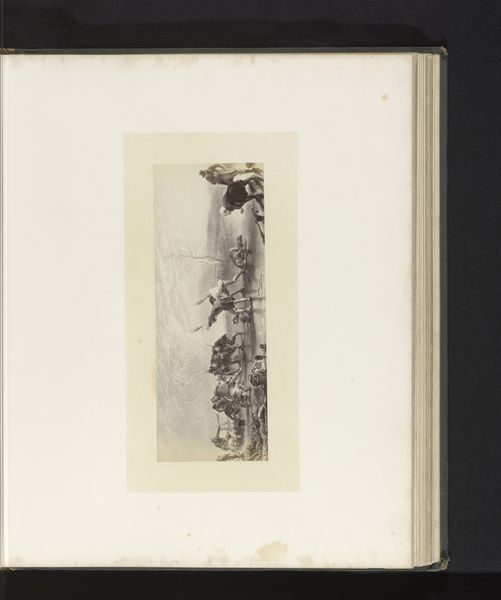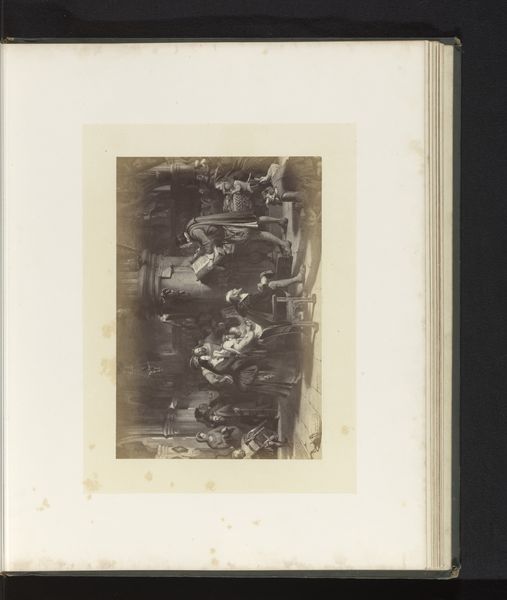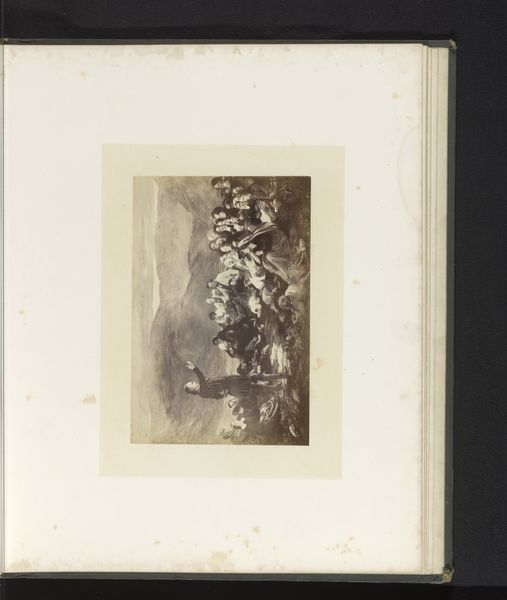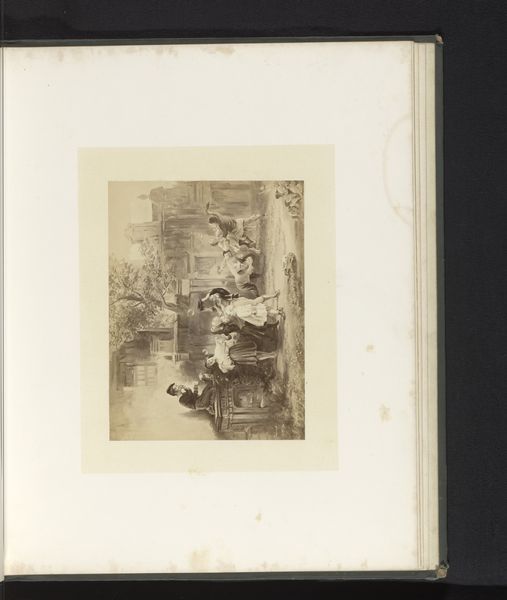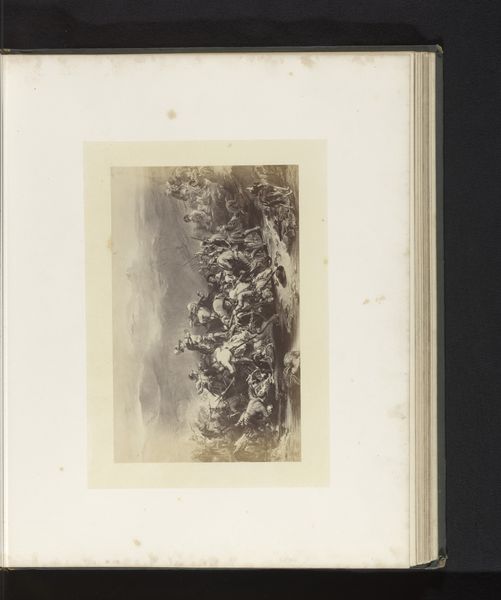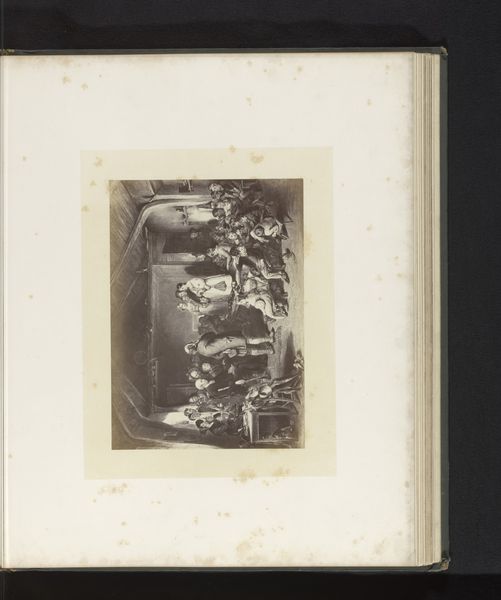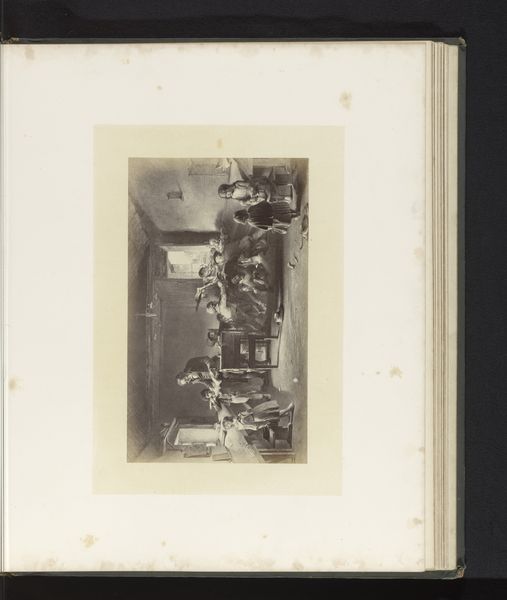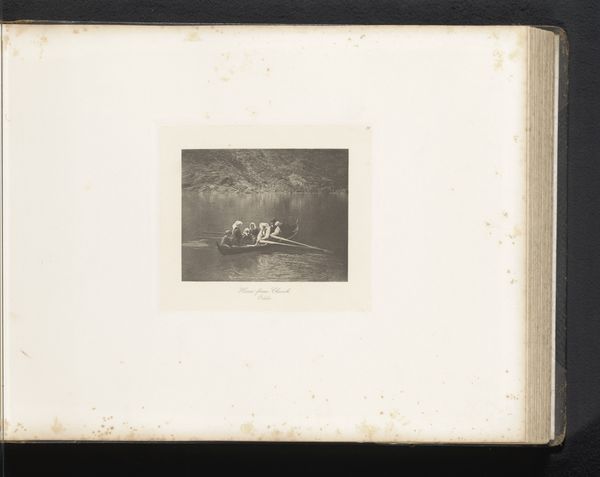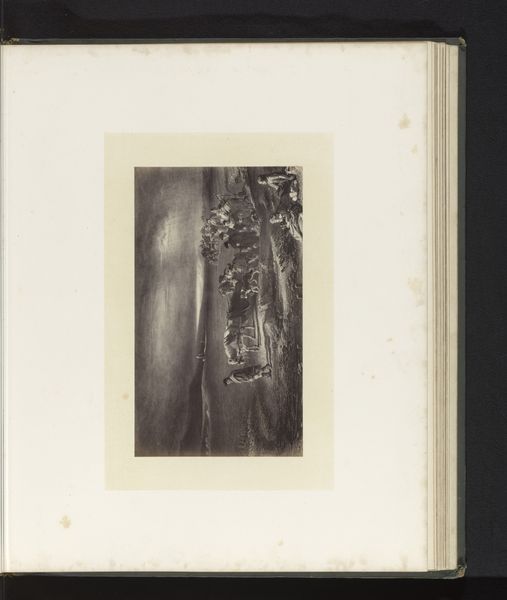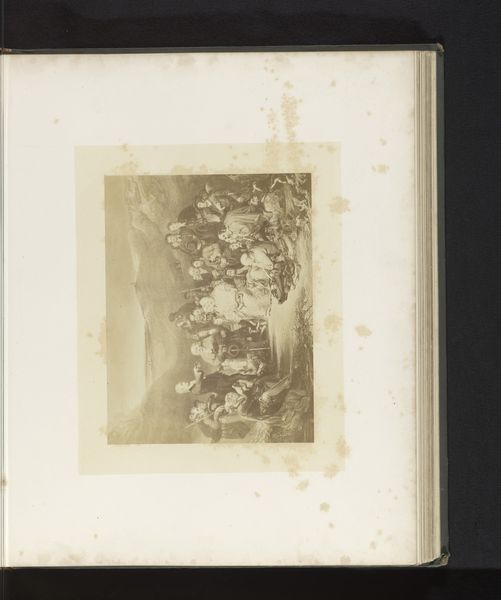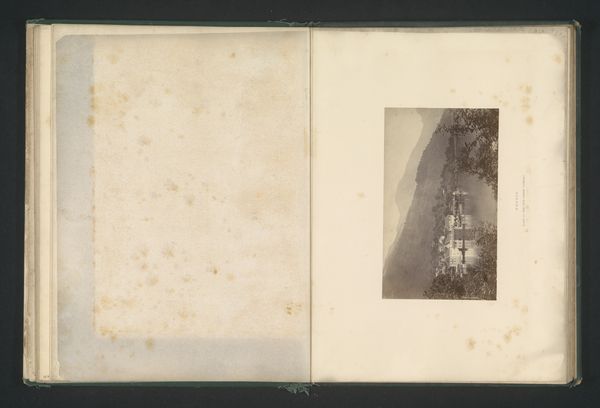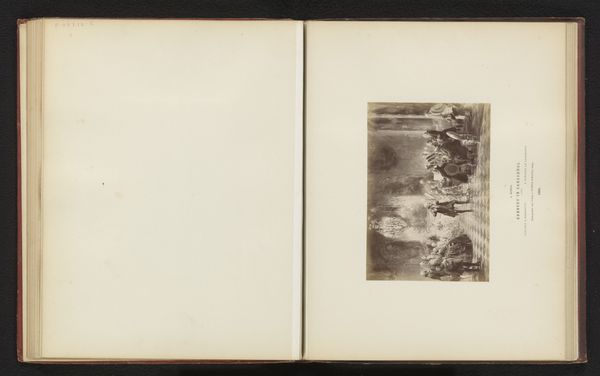
Fotoreproductie van een gravure van Incident in the Life of Napoleon, naar het schilderij door Sir George Harvey before 1870
0:00
0:00
Dimensions: height 173 mm, width 248 mm
Copyright: Rijks Museum: Open Domain
Curator: It's remarkable how history echoes through mediums. This photogravure captures Sir George Harvey's painting, "Incident in the Life of Napoleon." Thomas Annan reproduced the image sometime before 1870. Editor: Wow, the mood is pure drama! It feels both intimate and epic, all captured in monochrome. There’s something about the blurry figures in the back, contrasted to Napoleon almost front and center that just pulls you into the story, whatever it might be. Curator: Indeed. This image embodies a distinct romanticism, turning a historical event into a dramatic visual story. Gravures like this allowed wider audiences to access historical narratives rendered originally in paint. They brought stories of Napoleon, which, depending on how one views it, brought propaganda to middle-class parlors. Editor: Absolutely, and beyond the politics, there’s the technical marvel, right? Transforming oil paint and canvas into light and shadow, all through this photographic print… It almost feels like witnessing history filtered through layers of time. Makes you think, what’s real, what's reproduction, and how does our view keep shifting? Curator: The composition steers clear of valorizing the emperor as history books often do. Rather, this specific piece appears interested in capturing a brief respite amidst military life. Consider, after all, it's named 'incident in the life,' and not, say, "Napoleon Victorious". Editor: I find myself imagining the conversation...maybe the scene is meant to offer some personal insight. Did this moment even happen? It does feel less like a declaration and more of a whisper. Art's fascinating like that: fact, fiction, a bit of both… Curator: Precisely, photography in this period plays a curious game with representation and realism. What seems objective becomes imbued with intentional choices that ultimately affect how audiences perceived Napoleon and understood history. Editor: The way we interpret these old artworks says a lot about where we stand in time, huh? Each era probably picks up a completely different set of emotions from this very same image. Food for thought.
Comments
No comments
Be the first to comment and join the conversation on the ultimate creative platform.
